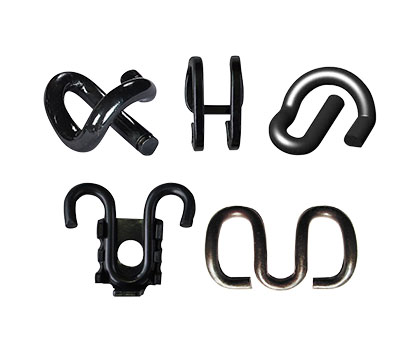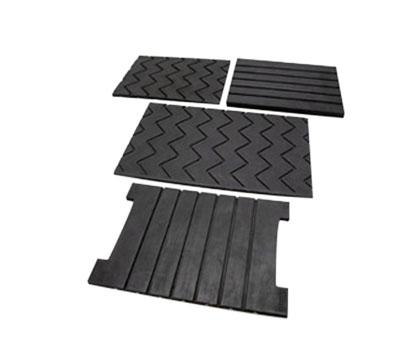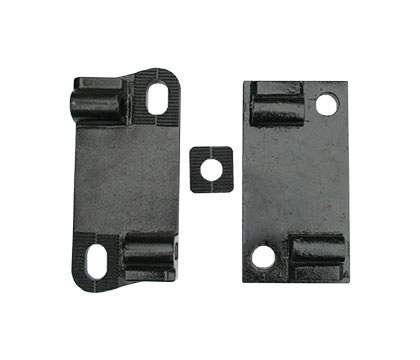A rail fastening system is used to fix the rails to railroad ties or sleepers, usually including spikes, rail anchors, tie plates, chairs etc.
5 stages of Rail Fastening System development:
The rails and sleepers of Rail Fastening System were made of wood
In the earliest stage, the rails and sleepers were made of wood. The rails were fixed to the sleepers by pegs or nails through holes in the rail.

Rail fastening system cast iron rails with holes to be fixed to a support had been put into using
In the 18th century cast iron rails with holes to be fixed to a support had been put into use and in this period flanged rail and fish bellied rail were developed. If stone block sleepers were used a wooden block would be inserted into a small concavity and the nails would be driven into. It is thought that the first chair attached to the rail via bolts was introduced in 1797.
RAILWAY WITH FISH BELLIED CAST IRON RAILS LAID ON STONE BLOCK-CONSTRUCTED AT LOUCHBOROUGH IN 1789
The first T shape rolled rails were produced of Rail fastening system
Later in 1820s the first T shape rolled rails were produced. The rails were held by iron wedges which were replaced by wooden wedges later. In the 1830s the flanged “tee” rail was invented. It had a flat bottom and unlike the T shape rails it didn’t need chairs. These rails were fixed to the sleeper directly by nails.
The flanged T rail being used with tie-plates gradually became common place on worldwide railways.
A rail spike ( cut spike) is a big offset head nail to hold the rails and base plates to railroad ties.
Cast iron chairs of Rail fastening system had been used to secure T-shaped rails
It was initially used in 1832 according to the record. At that time, heavy and costly cast iron chairs had been used to secure T-shaped rails until Robert Livingston Stevens put a supporting base to the T rail which could be fixed with a spike.
At first spikes were driven into the wooden sleepers by hand which later has been replaced by spike drivers.
A dog spike works similarly like a cut spike but with a pointed penetrating head.
A screw spike is usually 6 in length, under 1 in. They are fixed into a pre-bored hole in the sleeper. It costs higher than the rail spike (about twice price )but performs better in fixing power and can be used together with spring washers.
Fang bolts (rail anchor bolts) are also used to fix rails or chairs to sleepers which are inserted into a hole in the sleeper with a fanged nut biting into the lower surface of the sleeper. It can better withstand the loosening caused by the vibration of the train.
Spring spikes (also called elastic rail spikes) are applied with flat-bottomed rail, baseplates and wooden sleepers. It can prevent the rail from tilting and fasten the baseplate to the sleeper.
The original rail chairs in 1800 were made of cast iron. It was put at the end of the rails for fixing and supporting. It could also be used to join the two rails together.
The early rolled T-shaped and I-shaped rails needed cast-iron chairs to support by using fang-bolts, wooden spikes, spikes or screws.
Rail fastening system of flanged T rail was spiked to the ties and tie plates were created
Before 1900 flanged T rail was spiked to the ties directly and then tie plates were created. A tie plate also named baseplate is a plate made of steel to enlarge the bearing area and hold the rail. It is fixed to wooden ties by spikes or bolts though holes in the plate. Usually the plate has one or two shoulders to hold the rail and the two shoulders type is currently in common use.




